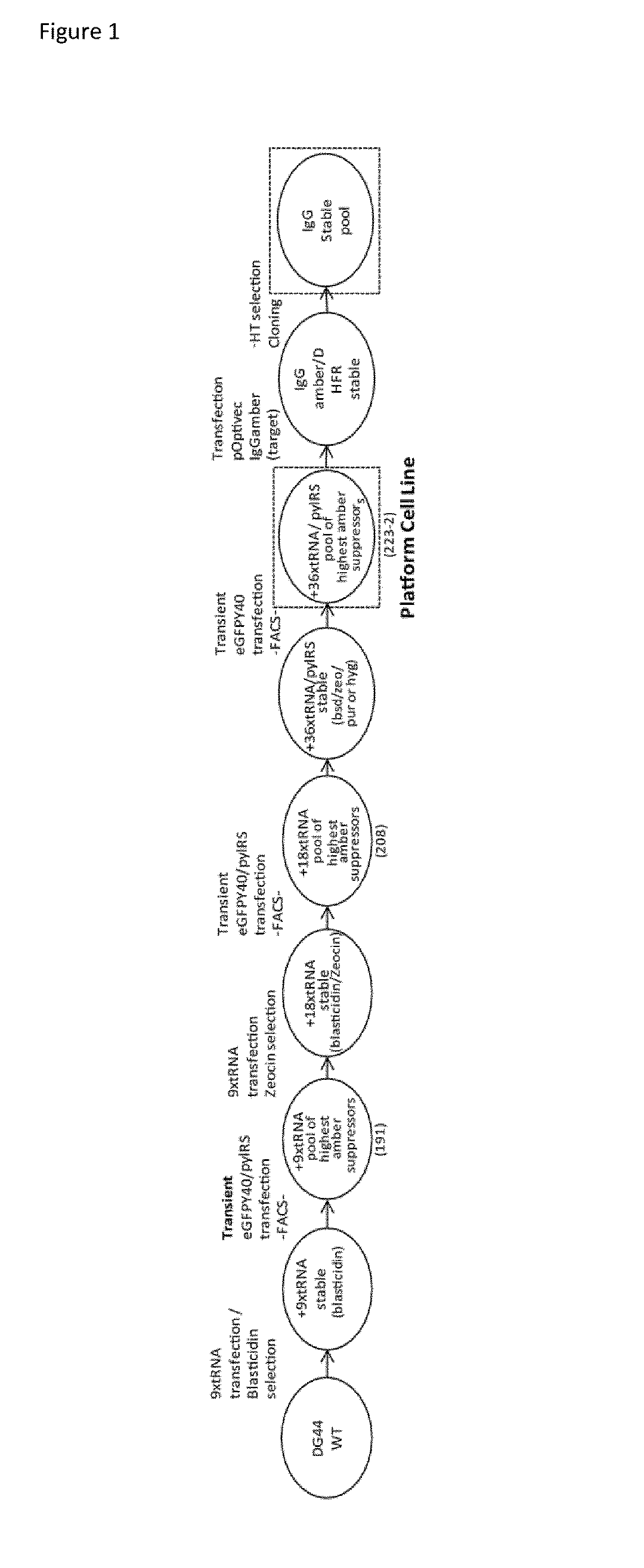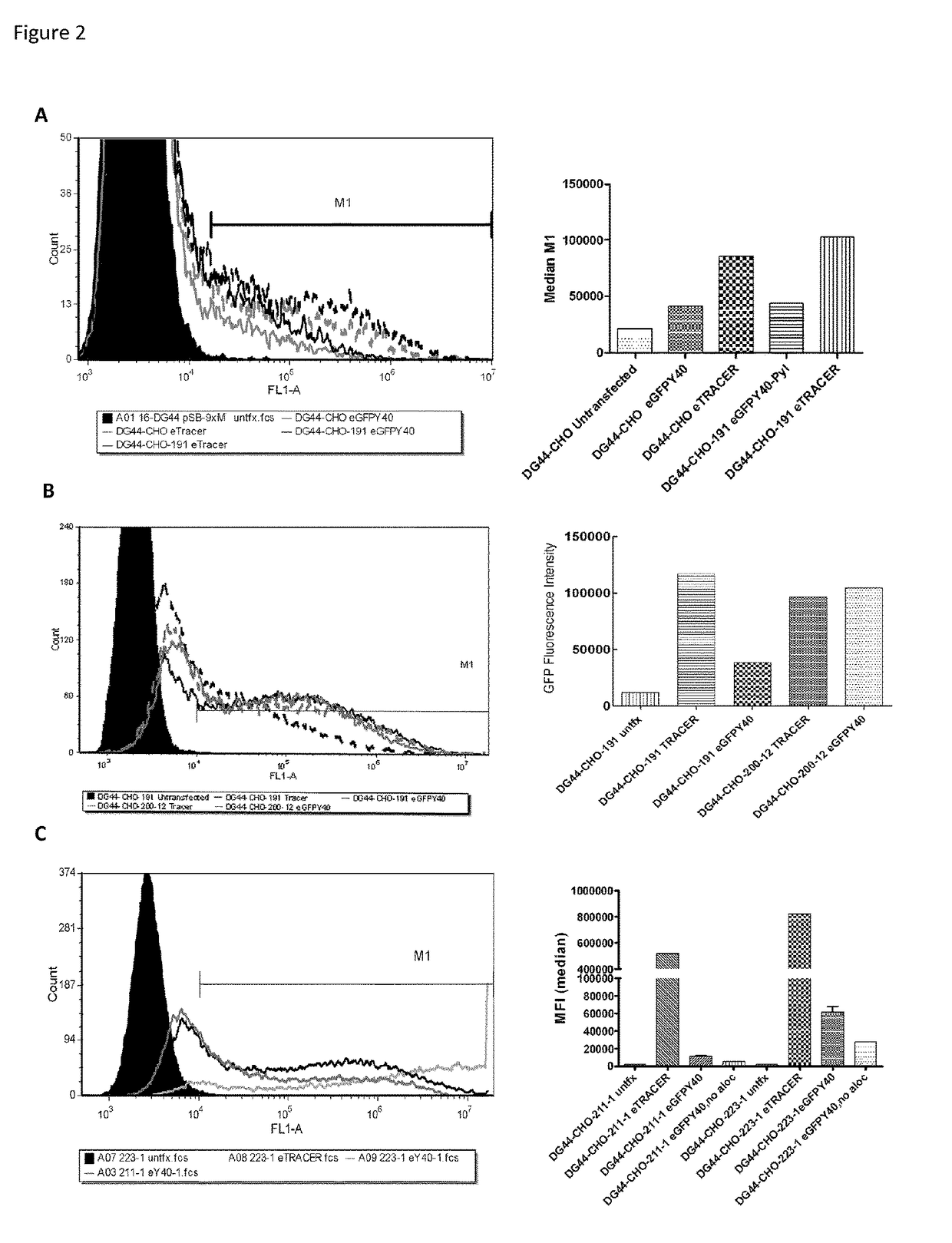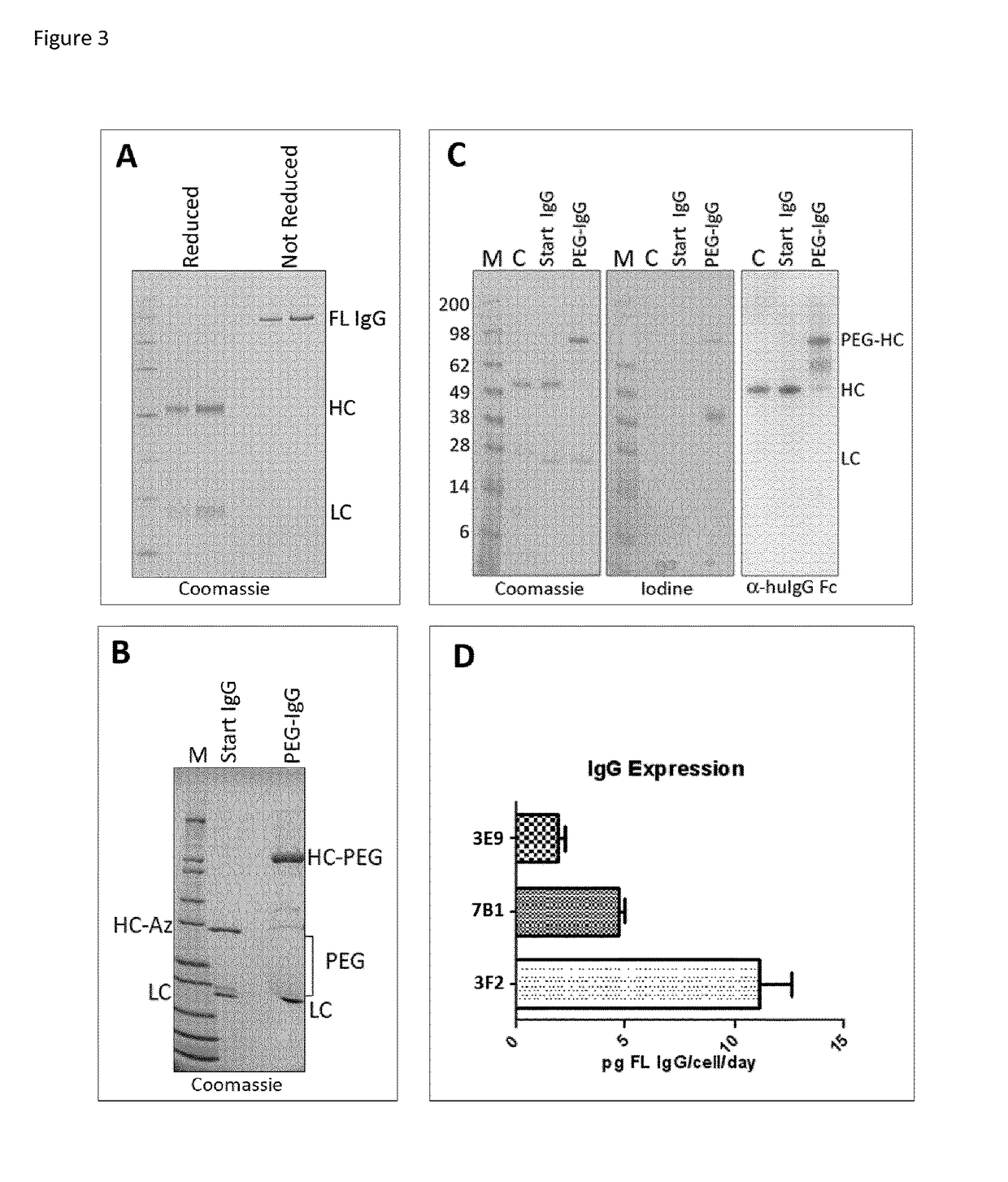Cell lines
a cell line and cell technology, applied in the field of stable eukaryotic cell lines, can solve problems such as toxic effects, and achieve the effects of reducing or masking the toxic effects of trnapyl, easy preparation, and easy incorporation into proteins
- Summary
- Abstract
- Description
- Claims
- Application Information
AI Technical Summary
Benefits of technology
Problems solved by technology
Method used
Image
Examples
example 1
n of a Stable Cell Line
[0664]The generation of a platform cell line capable of site specific integration of nnAAs into a target protein required the stepwise construction of a cell line stably expressing the pylRS and the pyltRNA. This was accomplished by sequential introduction of the pylRS / tRNA expression elements and iterative selection steps to identify high functioning cells (FIG. 1).
[0665]A plasmid containing nine copies of the U6-pyltRNA expression cassette as well as a sequence encoding the human INF Matrix Attachment Region (pSB-9×tRNA-MARS whereby the U6 is defined in SEQ ID 32, the tRNA sequence in Seq ID28), a sequence element that mediates the organization of chromatin in the nucleus and plays a role in the regulation of gene expression and enhances stability of these elements through replication (Klar 2005; Heng 2004; Piechaczek 1999) were transfected into DG44-CHO cells and selected in ProCHO4 medium supplemented with HT supplement containing 0.1 mM hypoxanthine and 0...
example 2
pression Associated Toxicity
[0671]During the course of the platform cell line isolation the inventors observed that as an increasing amount of the pylRS / tRNApyl was introduced in order to improve the efficiency of the system, the viability of the cells deteriorated. In particular increasing tRNApyl levels were found to have the greatest impact on amber suppression efficacy. This was observed in cells transiently transfected with pJTI-R4-pylRS-eGFPY40 and vectors encoding different numbers of U6-tRNA expression cassettes and the mean fluorescence was determined using an Accuri flow cytometer (FIG. 4A). We observed that cells lacking a tRNA expression cassette, or cells grown in the absence of ALOC did not show a significant GFP signal. However, the expression level of GFP increased with the number of tRNA gene copies indicating that tRNA is an important component of the amber suppression system. To further refine the effect of tRNA levels in amber suppression we transiently transfect...
example 3
s to Mitigate Amber Suppression Associated Toxicity
[0676]The toxicity associated with amber suppression led us to conceive of alternative approaches that would mitigate this toxicity in the development of an expression cell line while enabling the isolation of highly active amber suppressor cells.
“Target First” Approach
[0677]One approach to mitigate the observed toxicity in the development of a stable expression cell line while enabling the isolation of highly active amber suppressor cells requires the introduction of a highly expressed target gene that contains an amber codon prior to the introduction of the pylRS and pyltRNA. High levels of message from this gene effectively compete with endogeneous gene expression for the activated pyltRNA available in the cell and thus reducing the impact to the cell's functional machinery. To do this an eukaryotic expression host cell is transfected with a gene intended for expression and containing one or more amber stop codons, such as an IgG...
PUM
| Property | Measurement | Unit |
|---|---|---|
| molecular weight | aaaaa | aaaaa |
| molecular weight | aaaaa | aaaaa |
| molecular weight | aaaaa | aaaaa |
Abstract
Description
Claims
Application Information
 Login to View More
Login to View More - R&D
- Intellectual Property
- Life Sciences
- Materials
- Tech Scout
- Unparalleled Data Quality
- Higher Quality Content
- 60% Fewer Hallucinations
Browse by: Latest US Patents, China's latest patents, Technical Efficacy Thesaurus, Application Domain, Technology Topic, Popular Technical Reports.
© 2025 PatSnap. All rights reserved.Legal|Privacy policy|Modern Slavery Act Transparency Statement|Sitemap|About US| Contact US: help@patsnap.com



